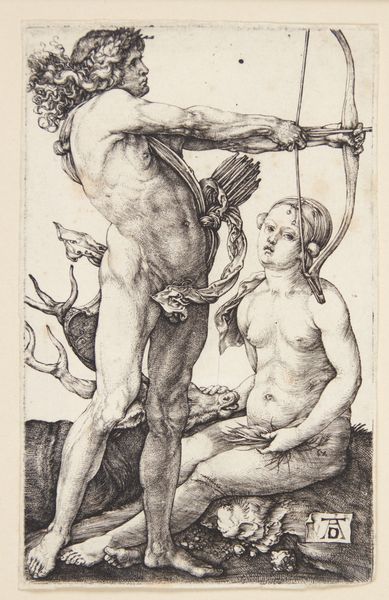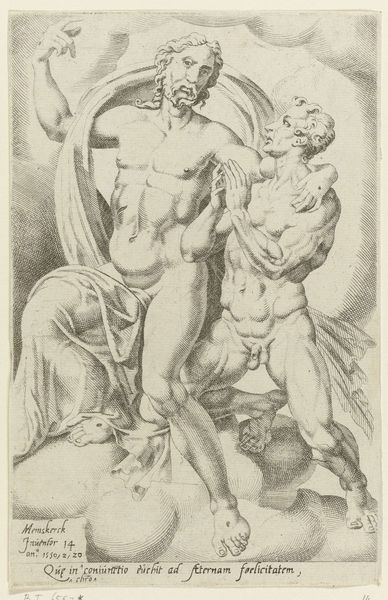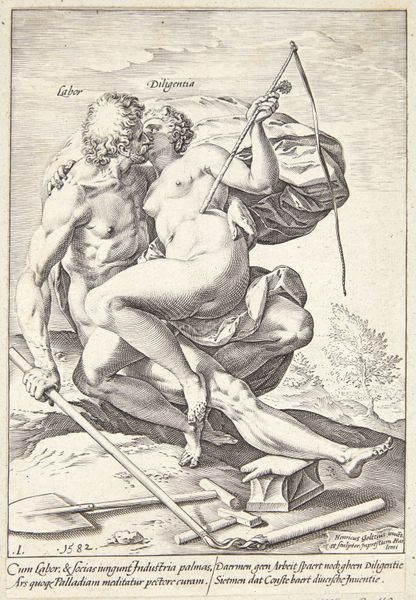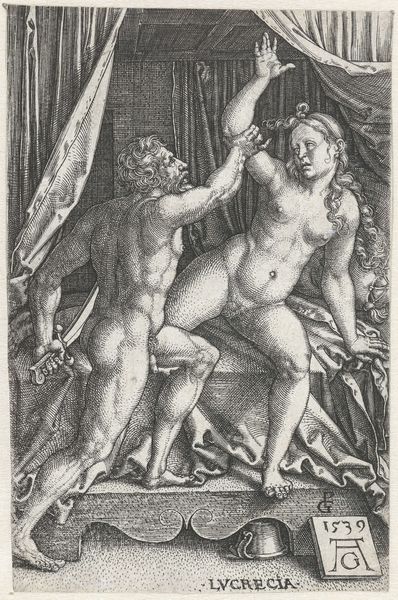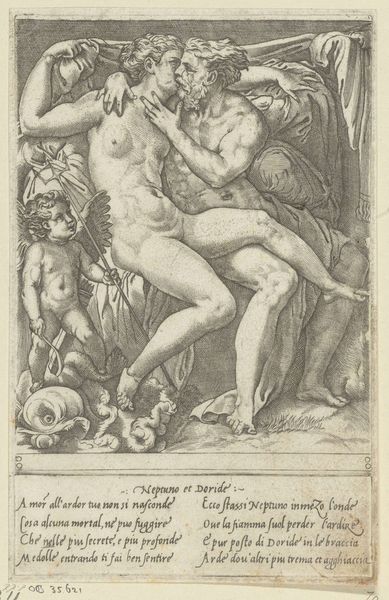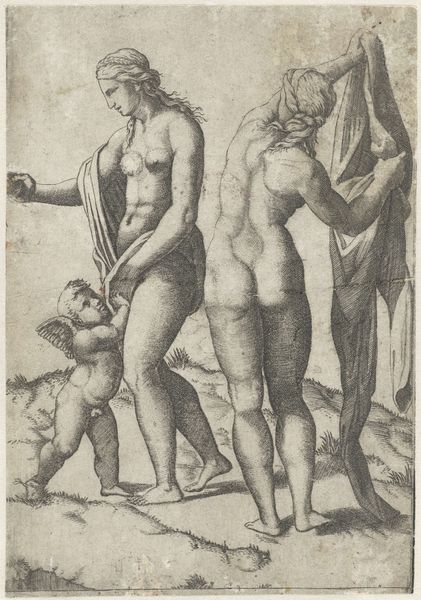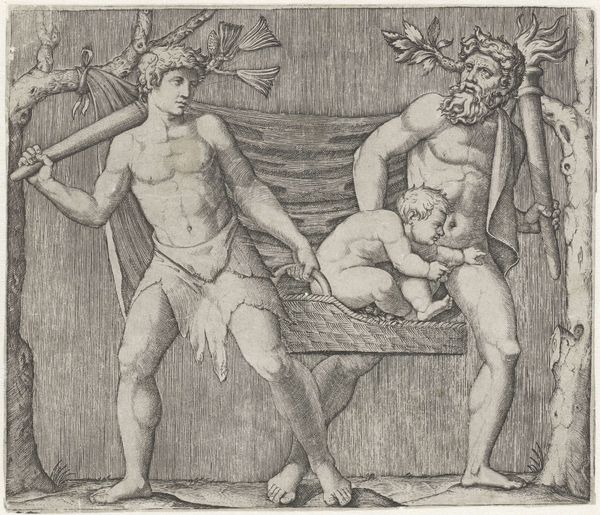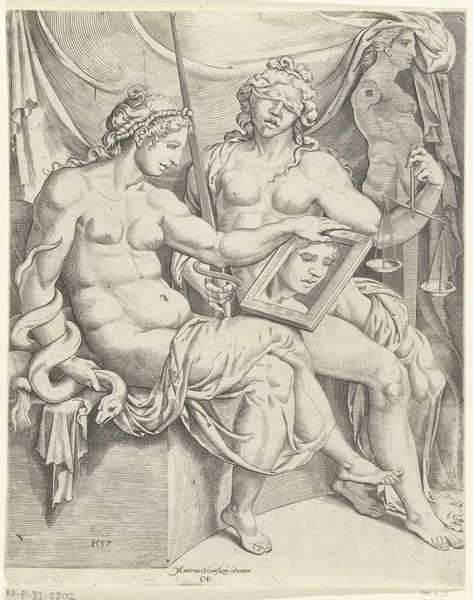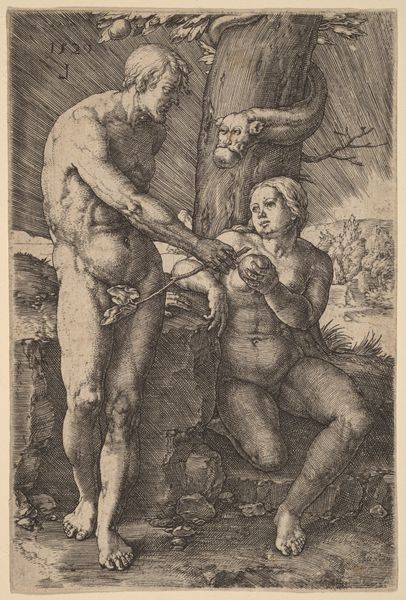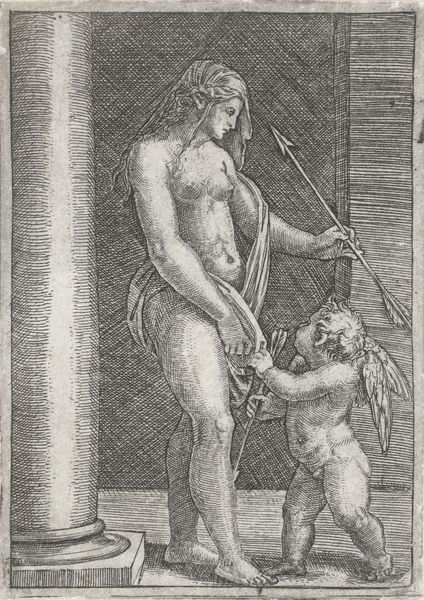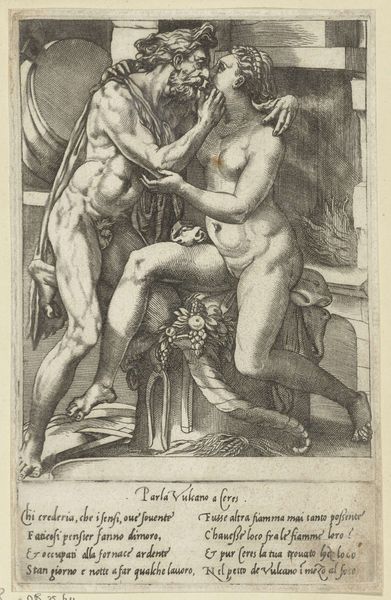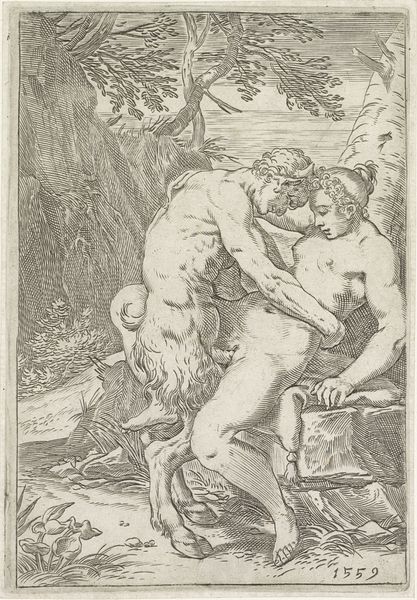
drawing, etching, engraving
#
drawing
#
etching
#
charcoal drawing
#
figuration
#
form
#
roman-mythology
#
mythology
#
line
#
history-painting
#
northern-renaissance
#
nude
#
engraving
Copyright: Public domain
Curator: Let’s turn our attention to Albrecht Durer’s engraving, “Apollo and Diana,” created in 1502. What strikes you about this piece? Editor: The intensity of line work immediately catches my eye. Look at the dense hatching that shapes form and creates areas of deep shadow. There’s a palpable tension between the smooth surfaces of the bodies and the rough texture of the ground. Curator: Absolutely. Durer was a master of engraving, and he employed techniques to create tonal variations usually found in painting. It is fascinating to view the cultural currents shaping the early 16th century, notably the resurgence of interest in classical antiquity. Editor: What do you mean? Curator: Here, we see Durer grappling with idealized forms, the god and goddess rendered nude in the classical manner. The way they are placed feels like a direct quotation from antique sculpture but also deeply tied to craft and making with one's own hand. Editor: I see your point. It is compelling that these figures also carry a decidedly Northern European sensibility, don't they? Diana's rounded figure, for example. It's not the hyper-idealized classicism of, say, a Botticelli. The material handling emphasizes texture, craft, and the labour of its making, nodding to Durer's socio-cultural roots, certainly. Curator: Precisely. He melds this with the dramatic narrative—Apollo, the god of light, poised with his bow, alongside Diana, associated with the moon and the hunt, and notice those animal heads flanking the pair? Durer's clever use of light and shadow gives the piece dramatic gravity, something for which he would become famous. His work elevated printmaking as a medium, significantly raising the status of those skilled in this form of labour. Editor: It's an engaging tension between classical idealism, artisanal craftsmanship, and a very specific regional aesthetic, beautifully rendered in the printmaking process. It truly makes one consider the impact of material agency on our perception of historical context and artistic labour. Curator: Indeed. It prompts us to consider the dialogue between the ancient world and the burgeoning Renaissance and to think about how artwork functions in both political and cultural landscapes.
Comments
No comments
Be the first to comment and join the conversation on the ultimate creative platform.
